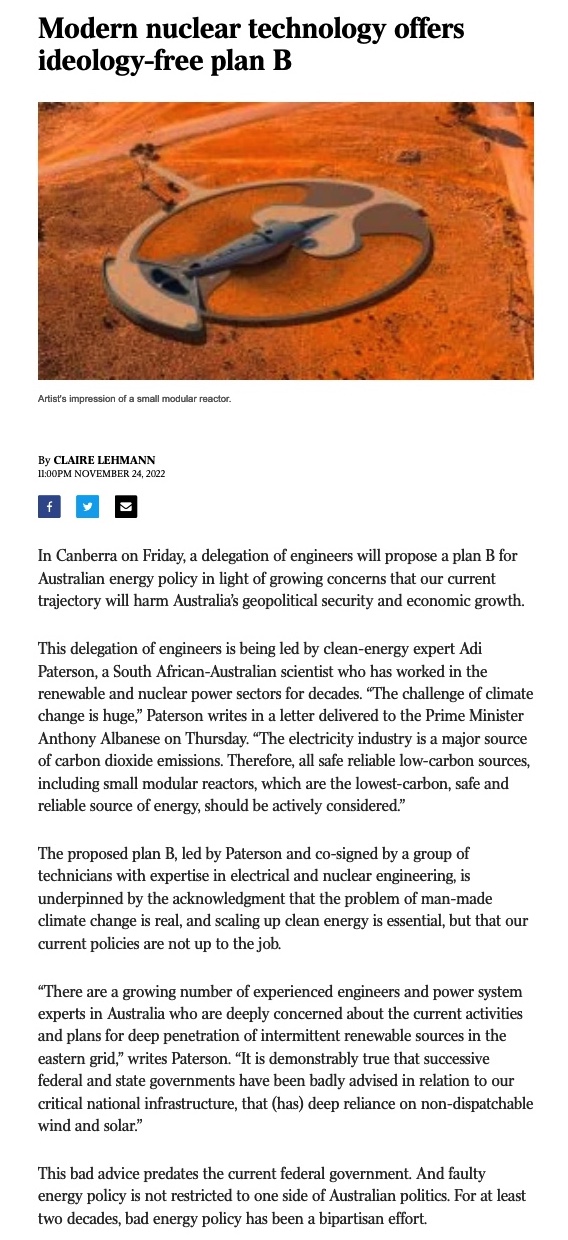Strewth, crikey, turn your back for a nanosecond, and Brother Stuie is up to it again. What a headline puller he is ...
And say what? That deviant, wretched hussie, that treacherous betrayer of the lizard Oz, the savvy Savva's got a new book coming out, and already there are extracts to hand featuring Josh whining about his overlord?
What new hell is this?
Oops, sorry, for a moment the pond wandered off the reptile reservation, if one might be politically incorrect and recall the days of maltreatment of indigenous people around the world ...
Of course any mention of Brother Stuie or jolly Josh whining or the deplorable treachery of the savvy Savva has been banned at the lizard Oz ...
Instead the pond should have been leading off with the bromancer, top of the digital page early in the morn ... but there is an upside. While mercifully short, it's rewardingly long on lies ... and suggests the reptiles are desperate at the thought, the chore, the onerous duty, of more years of comrade Dan bashing ...
It was the next line that sent the pond right off. "
No Christian I know of anywhere defends former barbaric practices of gay conversion therapy..."
That suggests the bromancer doesn't know many fundamentalist Xians, still deeply wedded to the notion that homosexuality is a sin worthy of a stint in eternal hellfire ...
Not so long ago, back on 31st October, the HUN ran a piece by Shannon Deery titled "Family First pledges to wind back contested gay conversion laws" (sorry, the pond doesn't link to Murdochian rags)
Inter alia, and not to bother with the whole piece, it made clear that Lee Jones of Family First was keen to get back to the good old days when parents could warn their spawn that being inclined to homosexual or TG ways was a sure sign they'd been possessed by Satan ... and they were desperately in need of conversion back to guilt-laden unhappiness at the way the long absent lord had constructed them ...
There's the rub -
"to treat and pray for children struggling with gender issues". And off to an eternity of hellfire if they get the struggle wrong ... or at least off to a barking mad, believing in an imaginary friend, preacher to fuck with their minds, and convert them to the one true path of madness ...
Uh huh, there's no support for coercive or abusive practice, just an understanding that if you happen to be gay you're off to an eternity of hellfire, but don't you cultivate any guilt around that notion, you go on living your depraved, filthy, wretched, deeply sinning lifestyle ...
But enough of all that, back to the bromancer, apparently unaware that some Xians, Islamics, whatever, are still deeply attached to poofter bashing ...
One of the problems for the Liberal party in Victoria was the way it became infested, neigh encouraged, barking mad fundamentalist Xians to become involved, and then discovered that they spent their time howling at the moon at Comrade Dan being a bigot for not allowing a decent bout of poofter bashing.
Just when you think the bromancer shows some nascent sign of sanity, the barking mad fundamentalist bigoted Catholic in him surfaces yet again ...
And so to comical Claire, doing the nuke thing, and here the pond owes a debt of gratitude to a correspondent, which will become clear once the pond gets past the first gobbet ...
First allow the pond to say how disappointed it was with that artist's impression of a small nuclear reactor, as if there aren't shots of real life, actually working now SMRs to hand ... especially as every reptile knows that this sort of story should begin with a snap of Satanic windmills imported from
The Exorcist, or at least a vast array of hideous solar panels ...
Second, that debt of gratitude to a correspondent who noted several links, though this story by Oliver Gordon will do ...
It wasn't dated, but internal links suggest it was done this year and it ran under the header
Small modular reactors: What is taking so long? and after the question came
Next-generation nuclear has long been just around the corner, but debate still rages over the silver-bullet credentials of small modular reactors.
There were lots of fancy graphs and technical details, and a bit of both siderism, and the pond had to spend more time with cackling Claire, so it only lifted a few quotes ...
In fact, SMRs are not forecast to hit the commercial market before 2030, and although SMRs are expected to have lower up-front capital costs per reactor, their economic competitiveness is still to be proven in practice once they are deployed at scale. Nuclear reactors are extremely complex systems that must comply with stringent safety requirements, taking into account a wide variety of accident scenarios. The licensing process is extensive and country-dependent, implying some standardisation will be required for SMRs to properly take off.
“Harmonisation of regulations and requirements around the world is essential to support standardisation of design, in-factory series production and limited design adaptations to country-specific requirements,” says Gonçalves.
The protracted development time also reflects a relative lack of interest and funding in recent decades, according to De Temmerman. “Funding for nuclear is very small compared to what is invested in other energy technologies, and the recent surge in investment has largely been driven by nuclear fusion,” he says.
Now back to comical Claire, with an opening line for the next gobbet that would make any stand-up comedian green with envy ...
Back to the correspondent's source for another quote ...
However – beyond the perennial oscillation of public acceptance of nuclear energy – there are still a variety of challenges SMR technology needs to overcome before it can reach commercial deployment. “The hardest is economics," says M V Ramana, the Simons Chair in Disarmament, Global and Human Security at the School of Public Policy and Global Affairs at the University of British Columbia, Canada, and author of The Power of Promise: Examining Nuclear Energy in India. "Nuclear energy is an expensive way to generate electricity.”
In the 2021 edition of its annual cost report, Wall Street firm Lazard estimated that the levelised cost of electricity (LCOE) from new nuclear plants will be $131–204 per megawatt-hour (MWh), whereas newly constructed utility-scale solar and wind plants produce electricity at somewhere between $26–50MWh. “The gap between nuclear power and renewables is large and growing,” says Ramana. “While nuclear costs have increased with time, the levelised cost of electricity for solar and wind has declined rapidly, and this is expected to continue over the coming decades.”
Even operating costs for nuclear power plants are high and many reactors have been shut down for being unprofitable. In 2018, NextEra, a large electric utility in the US, decided to shut down the Duane Arnold nuclear reactor because it estimated that replacing nuclear with wind power would “save customers nearly $300 million in energy costs, on a net present value basis”.
Those costs are for traditional nuclear power plants. SMRs, by comparison, produce relatively small amounts of electricity, but, contrary to popular opinion, Ramana thinks this is an economic disadvantage. When the power output of the reactor decreases, it generates less revenue for its utility owner, but the cost of constructing the reactor is not proportionately smaller. “SMRs will, therefore, cost more than large reactors for each megawatt of generation capacity,” says Ramana. “This makes electricity from small reactors more expensive, which is why most of the early small reactors built in the US shut down early: they just couldn’t compete economically.”
NuScale, however, claims its 12-module, 924MW plant design will have an LCOE of approximately $40–65/MWh. "NuScale’s innovative design eliminates reactor coolant pumps, large bore piping and other systems and components found in large conventional reactors, resulting in an extremely strong safety case and reduced capital and operational costs," Diane Hughes, NuScale’s vice-president of marketing and communications, told Energy Monitor.
The modular nature of SMRs’ design could also pose a safety issue, says Ramana. To combat nuclear’s unfavourable economics, SMR proposals often envisage building multiple reactors at a site, aiming to lower costs by taking advantage of common infrastructure. The configuration offered by NuScale, for example, has 12 reactor modules at each site – although it also offers four and six-unit versions. With multiple reactors, the combined radioactive inventories might be comparable to that of a large reactor.
“Multiple reactors at a site increase the risk that an accident at one unit might either induce accidents at other reactors or make it harder to take preventive actions at others,” says Ramana. “This is especially the case if the underlying reason for the accident is a common one that affects all of the reactors, such as an earthquake.” In the case of the accident at Japan’s Fukushima Daiichi plant in 2011, explosions at one reactor damaged the spent fuel pool in a nearby reactor, while radiation leaks from one unit made it difficult for emergency workers to approach the other units.
And then to this conclusion, where the debate rages on, but one thing is certain...
“The only role SMRs can play in having the world move towards net zero is a negative one,” argues Ramana. He points to two reasons. First, the money invested in SMRs would save far more carbon if it were invested in accelerating the switch to renewables. “There is thus an economic opportunity cost to investing in SMRs or in nuclear energy more generally,” he says. Second, building nuclear reactors is extremely time-consuming. A nuclear plant takes around a decade from the start of construction to producing electricity – and that start is often delayed by another decade to get the requisite planning and financing. “This compounds the problem of the economic opportunity cost,” says Ramana.
He contests the argument that nuclear can provide the flexibility to back up the variability of renewable energy. “If one is using a nuclear plant to back up renewables, it will be operating at an even lower efficiency," he says. "You will be spreading out a large capital cost over fewer kilowatt hours. It would be better to address the variability of renewables using a combination of demand-side responses, diversity [of technology and geography] and storage.”
De Temmerman, however, points to recent studies from Princeton University and France’s electricity transmission system operator RTE that indicate that, when considering full energy system costs, a system that includes some nuclear power would be cheaper than a fully renewable system because of the reduced overall need for storage and flexibility. “However, much depends on the assumed cost of the nuclear power, which is capex [capital expenditure] intensive; capital is now more expensive than for renewable projects.
“There are fundamental questions behind that," De Temmerman continues. "Is 100% renewables feasible? Some say yes, but there are technical challenges still to be resolved regarding flexibility and storage.”
The debate will rage on, but one thing is certain: SMRs won’t be markedly contributing to global grids any time soon.
Meanwhile, delusional Claire had her own conclusion ...
Oh just fuck off, you comical, cackling goose. If it took a long time for the mutton Dutton to accept the reality of climate change - with jokes about drowning islands all the go - and he's still flogging his own brand of denialism ... as recently as August
Peter Dutton rejects push by moderate Liberals to change position on climate legislation (relax, it's a Graudian link, you can head off to an eternity of hellfire with the imperial invaders) ... so how come all the reptiles are hopping on to the SMR bandwagon, a vast murmuration of like minds demanding the country be nuked, without asking the hard questions about costs and practicality?
Why does it alway seem like it's a none too subtle way of bashing renewables? And by implication proposing that climate change, if it actually might be happening, and there's still a lot of reptile doubt about that, isn't an immediate problem ... especially as plan B is going to be on the table for a very long time, far too long for the action needed to be taken immediately ...
Never mind, the reptiles triggered the pond this day, manifest stupidity and bigotry usually does, so it was a relief to turn to the hole in the bucket man to have a snooze.
Instead of Thucydides, the hole in the bucket man decided to head back to 2013 to quote himself ...
Frankly the pond is only running this piece because our Henry has a fan club, as weird a thought as there being Dame Groan devotees in the world, and they probably marvel at the way that our Henry reared at the notion that autism might create some issues for people trying to deal with the world ...
Would the pond rather be off with a Wilcox cartoon?
Of course the pond would, but that grim logic might strike a chord with the grimly disapproving tone of an alleged economist out to disable the disabled... and even worse, one determined to go through a five part listicle ...

If you have heard one thing about the NDIS recently it is probably about the scheme experiencing a “cost blow out”. But what you likely haven’t heard discussed are the benefits of the scheme. This one-sided conversation misses the bigger picture around why the NDIS is a worthwhile investment and why it is important we get the scheme right.
The NDIS was always designed under the assumption that the benefits of the scheme would significantly outweigh the costs. The scheme would support the independence and social and economic participation of people with significant and permanent disability by providing reasonable and necessary supports.
The NDIS was never designed to be a welfare scheme but an investment. It would support people with disability to have choice and control over their lives and in turn also make a significant contribution to the economy.
The NDIS now covers around 535,000 participants and is expected to cost $35 billion this year. The scheme has been predicted to have an average forecast growth of 14 per cent a year over the next decade. This might mean the NDIS could eventually cost more than $50 billion per year within four years and be more expensive than many other federal government social programs. Although as the NDIA’s Annual Financial Sustainability reports demonstrate, the scheme actuaries have consistently overestimated scheme costs so we may want to be wary with these estimates.
Money spent on the NDIS generates a number of direct and indirect economic impacts.
We can start with the jobs that the NDIS creates. Beyond the 11,500 in the public service, NDIA and contractors who help support the scheme, there are around 270,000 workers from around 20 occupations who have their employment directly linked to NDIS funding. Beyond these are many more who benefit indirectly from spending in the sector, such as in manufacturing of relevant goods and products.
People with disability have significantly lower workforce participation than those without disability. Around half of working age people with disability are employed compared to 80 per cent of those without disability. As has been pointed out by Australian of the Year Dylan Alcott, amongst others, this is a large untapped potential workforce.
The NDIS has a role in supporting participants around employment goals. By providing support with daily activities, physical assistance and personal care, NDIS participants can find and maintain paid work. This might involve helping to purchase new assistive technology like a wheelchair, prosthetic or equipment to help people who are visually impaired to navigate independently. For some people with disability a lack of these aids means it can be difficult or even dangerous to leave the house...
And so on and so forth, but our Henry is in bean counting mode, and so there's a final gobbet of bean counting, by a tedious pedant of the first water, with not the slightest interest in helping out or fixing that bloody bucket ...
And there you have it ... the pond started out with Xians wanting to indulge in poofter bashing, wandered through a bit of nuking the country designed to bash renewables, and ended with a bloody minded book-balancing accountant intent on bashing the disabled ...
So much bashing, it must be snake-bashing season, and so it goes in reptile la la land, and so the pond turns to an infallible Pope to end on a note of comedy ...















Our E-Claire: "While it is true that Australia's Liberal and National parties took too long to accept the mainstream science on climate change...".
ReplyDeleteHolesome Henry: "It may well be that the Coalition should have done more to remedy the situation."
An advancing attack of cracks in the wall ?
And can somebody tell Holesome that the 'Fans of Thucydides' are feeling seriously deprived ...
"Never mind, the reptiles triggered the pond this day, manifest stupidity and bigotry usually does..." And the pond responded magnificently as it usually does.
ReplyDeleteYou're too kind GB, and the pond regrets not having the room to follow up your link on the Peter Gleeson affair, rich though it is ... but anyone sensible will be reading the comments section more avidly than the reptiles for handy tips and links
DeleteAbout as much attention as 'Gleeso' is wrthy of, DP, but I was tickled by just how rapidly fate can sometimes descend.
DeleteFair enough DP but yesterday's and today's SMR artworks are so similar they must derive from a common model. I can't think what it might be, but something like this
ReplyDeletehttps://www.apocalypselaterempire.com/al/alf/1950s/1959ourmaninhavana5.jpg
I prefer yesterday's coastal to today's desert version. The biggest river in Gillespie's electorate is the Manning and it is as pictured, 50m wide and waist deep most of the time except in a flood when it can carry off a house and could even cool a 300MW power station without cooking its fish. Still that's better than the desert version which has no fish, no river, and no cooling tower, so it's lucky it can safely overheat isn't it? And what about that Z on the roof, DP; could it be that it's modeled on a burnt-out tank?
Also, thanks Joe, I've revised my opinion, the cater is an almost but not entirely fact-free zone.
Thought about becoming the snaps editor for the lizard Oz? It took a while for the pond to realise that was from Our Man in Havana. You could have sold that architect's dream to Gillespie and thrown in a cooling country river ...
DeleteOf course - 'Our Man in Havana'. Proof that everything, but EVERYthing, is precedented.
DeleteThe best thing about not remembering what you said and did yesterday is that it all seems fresh and new when you say and do it again today. A theme that reptiles are experts at.
DeleteThe Henry writes like one who was bidding to be a consultant to provide ‘benchmarking’ to an organisation, back when there was still some stirrings of interest in that process. Even the timing is right - he cites what he wrote in 2013, which is about the time when most organisations - public and private - had discovered, through sad experience, that the ‘benchmarking’ that had been sold to them (and it always was sold - as a package, at a price, to do . . . . . ah, there’s the rub, to borrow from an earlier, existential, Dane) - anyway, that benchmarking gave you not a clue to what you might do to improve any part of your organisation. Trust the Henry to be that bit behind the game, even then.
ReplyDeleteI believe little more need be said. Well - unless some reader wishes to tell us that they, or their corporation, had a great experience with benchmarking, that said corporation was revitalised in the process, set out in new directions, and has had remarkable success since then.
Since 2013 ? Is that the Liberal Party you're describing there ?
DeleteI'll buy that Chadders, he seemed unusually surly and grumpy and apocalyptic, and sounded like his dream of giving the unworthy a lifestyle under a latter day Thomas Gradgrind had come to naught ...
Delete“(it) ...was a fundamental principle of the Gradgrind philosophy that everything was to be paid for. Nobody was ever on any account to give anybody anything, or render anybody help without purchase. Gratitude was to be abolished, and the virtues springing from it were not to be. Every inch of the existence of mankind, from birth to death, was to be a bargain across a counter. And if we didn’t get to Heaven that way, it was not a politico-economical place, and we had no business there.”
Does getting screwed over by consultants using the Hay evaluation method count?
DeleteThere always seemed to be a line of grifters of the Lyal Langley type offering some sort of magic to reinvent the business. The only common thread seemed to be a lack of familiarity with the industry and an elaborate backstory explaining why that didn’t matter.
Don’t get me wrong, I’m always ready to believe something bad about myself but the assessments didn’t seem to line up with any of the other staff - some were hilariously wrong.
Befuddled - I had forgotten about 'Hay Evaluation'. I managed to resist it in my own organisations, considering it belonged with so many other alleged 'human development' systems that were little more than the game best played over a few beverages, of choosing your all-time greatest team for the team sport of your choice. The practical case, always, was that you inherited a group of people who had come to the organisation for all sorts of reasons, and the challenge was to establish a work 'environment' such that as many as possible would be able to apply their particular talents to the overall task.
DeleteI have mentioned here, before, one person in a 'compliance' section, whose talents seemed to be a capacity to consume cups of tea and scones, while listening to people. When citizens wrote a letter complaining about something, if it were physically possible, I would have - shall we call him 'Gazza'? - ask if he could look in on them. Almost every time he heard the good citizens out, and they were satisfied that someone had actually listened to them. Which is as much as many people need in response to their unhappiness about particular issues.
Others in that unit tended to disparage 'Gazza', until I pointed out that if he did not mollify people, they would write to politicians, and the rest of us would have to outlay way too much time NOT placating the pollies, or the complainants, and all that took us from the work we needed to do.
Most fashionable 'human resource assessment' techniques of that time would have seen 'Gazza' placed elsewhere - or offered a separation package.
'Benchmarking' and 'Hay evaluation' ? The automatic reaction was something along the lines of "a fool and his money" but they aren't really fools and it isn't their money. I think sometimes it's just some kind of 'village ritual' that they engage in - like Morris dancing used to be - that fulfills some kind of group solidarity need.
Delete“Harmonisation of regulations and requirements around the world is essential to support standardisation of design,"
ReplyDeleteAh the irony! You can have your SMRs, but only if the UN-led World Government takes over.